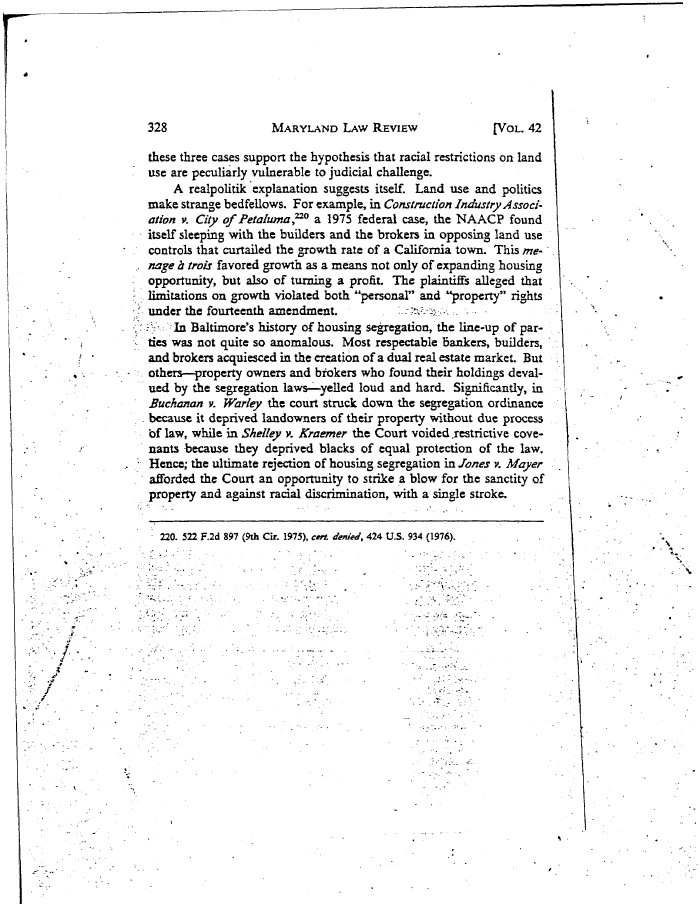 |
||||
|
Garrett Power, Apartheid Baltimore Style: The Residential Segregation Ordinances of 1910-1913, Maryland Law Review, 42 (1983) , Image No: 41 Enlarge and print image (53K) << PREVIOUS |
 |
||||
|
Garrett Power, Apartheid Baltimore Style: The Residential Segregation Ordinances of 1910-1913, Maryland Law Review, 42 (1983) , Image No: 41 Enlarge and print image (53K) << PREVIOUS |
| 328 MARYLAND LAW REVIEW [VOL. 42 these three cases support the hypothesis that racial restrictions on land use are peculiarly vulnerable to judicial challenge. A realpolitik explanation suggests itself. Land use and politics make strange bedfellows. For example, in Construction Industry Associ- ation v. City of Petaluma?220 a 1975 federal case, the NAACP found itself sleeping with the builders and the brokers in opposing land use controls that curtailed the growth rate of a California town. This me- nage a trois favored growth as a means not only of expanding housing opportunity, but also of turning a profit. The plaintiffs alleged that limitations on growth violated both "personal" and "property" rights under the fourteenth amendment. . . In Baltimore's history of housing segregation, the line-up of par- ties was not quite so anomalous. Most respectable bankers, builders, and brokers acquiesced in the creation of a dual real estate market. But others—property owners and brokers who found their holdings deval- ued by the segregation laws—yelled loud and hard. Significantly, in Buchanan v. Warley the court struck down the segregation ordinance because it deprived landowners of their property without due process of law, while in Shelley v. Kraemer the Court voided .restrictive cove- nants because they deprived blacks of equal protection of the law. Hence; the ultimate rejection of housing segregation in Jones v. Mayer afforded the Court an opportunity to strike a blow for the sanctity of property and against racial discrimination, with a single stroke. 220. 522 F.2d 897 (9th Cir. 1975), cert denied, 424 U.S. 934 (1976). |